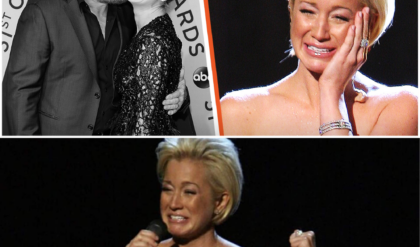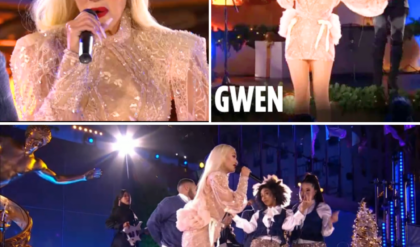In the sprawling universe of superhero cinema, few characters have swung through the hearts of audiences quite like Spider-Man. Since his debut in the pages of Amazing Fantasy #15 back in 1962, Peter Parker has embodied the awkward heroism of youth, the sting of loss, and the unyielding swing toward responsibility. Over the decades, actors like Tobey Maguire and Andrew Garfield have donned the red-and-blue suit, each bringing their own flavor to the web-slinger. But when it comes to capturing the essence of a teenager thrust into a world of gods and monsters, no one has done it better than Tom Holland. From his wide-eyed debut as a fresh-faced high schooler to his poised, battle-hardened portrayal in the latest Marvel spectacles, Holland’s evolution as Spider-Man isn’t just a career highlight—it’s a masterclass in growth, grit, and genuine charisma. As we stand on the cusp of 2026, with Spider-Man: Brand New Day poised to redefine the franchise once more, it’s clear: Tom Holland isn’t just a Spider-Man. He’s the Spider-Man.
Born Thomas Stanley Holland on June 1, 1996, in the leafy suburbs of Kingston upon Thames, London, Tom’s path to the spandex was anything but straightforward. The son of a photographer mother, Nikki, and a comedian-writer father, Dominic, young Tom grew up in a household buzzing with creativity. With three younger brothers—Harry, Sam, and Paddy—life was a whirlwind of football matches, family pranks, and the occasional impromptu dance routine. Diagnosed with dyslexia at age seven, school wasn’t always a triumph; he attended the all-boys Donhead Preparatory School and later Wimbledon College, where bullying over his love of dance left scars. But Tom had rhythm in his veins. Inspired by his parents’ artistic pursuits, he started ballet classes at nine, twirling to Janet Jackson tracks in the living room. Little did he know, those pirouettes would propel him onto the world’s stage.
His big break came serendipitously. Spotted by a casting director during a dance class, Tom auditioned for Billy Elliot the Musical at London’s Victoria Palace Theatre. After two grueling years of training, he debuted in 2008 as the protagonist’s cheeky best friend, Michael Caffrey. By 2009, he had stepped into the lead role of Billy, a coal miner’s son defying odds to chase his ballet dreams. The run lasted until 2010, earning rave reviews for the 12-year-old’s raw emotion and flawless footwork. “He dances like he’s flying,” one critic gushed, unwittingly foreshadowing the web-slinging to come. Theater honed Tom’s discipline; he faced taunts at school for his “girly” hobby but emerged tougher, more resilient. Offstage, he dabbled in carpentry—briefly enrolling in a Welsh trade school—and dreamed of teaching primary school kids. Acting, though, had him hooked.
Transitioning to film was a leap, but Tom nailed it with poise beyond his years. His screen debut arrived in 2012’s The Impossible, a harrowing drama about a family’s survival in the 2004 Indian Ocean tsunami. As Lucas, the eldest son clinging to hope amid devastation, Tom delivered a performance that shattered expectations. Critics called it “heart-wrenching,” and awards followed: the National Board of Review’s Breakthrough Performance and a nomination for Spain’s Goya Award for Best New Actor. At 16, he was the talk of the festival circuit. Roles trickled in—How I Live Now (2013) as a brooding survivor in a dystopian Britain, a turn as young Gregory Cromwell in the BBC’s Wolf Hall (2015), and a swashbuckling stint in In the Heart of the Sea (2015) opposite Chris Hemsworth. Each part showcased his versatility: vulnerable yet fierce, boyish but brooding. Hollywood was watching.
Then came the call that changed everything. In 2015, Marvel Studios and Sony were rebooting Spider-Man for the Marvel Cinematic Universe (MCU), seeking a fresh face to inject youth into the franchise after Andrew Garfield’s edgier take. Over 1,500 teens auditioned, but Tom stood out. Directors Joe and Anthony Russo remembered his screen test vividly: a homemade audition tape of him performing a gymnastics routine in his backyard, flipping and tumbling with infectious energy. “He had the physicality, the charm, and that indefinable spark,” they later shared. Stan Lee, Spider-Man’s co-creator, sealed the deal, declaring Tom the perfect age (19) and height (5’8″) to match the character’s comic-book roots. Signed to a six-film deal, Tom first swung into action in Captain America: Civil War (2016), stealing scenes as the quippy Queens kid recruited by Tony Stark. Clad in a DIY suit cobbled from bike helmets and ski goggles, his Peter Parker was all wide-eyed awe and awkward flips—a stark contrast to the brooding vigilantes of prior iterations. Audiences ate it up; the film grossed over $1.1 billion worldwide, and Tom’s star was born.
Spider-Man: Homecoming (2017) was his solo showcase, and what a debut it was. At 21, Tom became the youngest lead in an MCU film, portraying a Peter Parker juggling algebra homework with alien tech takedowns. Directed by Jon Watts, the movie leaned into high school hijinks: awkward crushes on Liz Toomes (Laura Harrier), bumbling mentorship from Robert Downey Jr.’s Iron Man, and a villain in Michael Keaton’s Vulture that felt grounded and menacing. Tom’s Peter was no invincible hero; he was a kid learning the hard way that “great power comes with great responsibility.” His physical comedy—flailing mid-web-swing or face-planting during patrols—drew laughs, while quieter moments, like his grief-stricken plea to Aunt May after a betrayal, tugged heartstrings. Critics raved: “Holland owns the role with ebullient, puppyish enthusiasm,” one review noted. Box office? A cool $880 million. Fans crowned it the truest Spider-Man flick yet, blending humor, heart, and high-stakes action.
As the MCU’s Infinity Saga ramped up, Tom’s Spider-Man became the emotional core. In Avengers: Infinity War (2018), he bantered with the likes of Doctor Strange and Star-Lord before Thanos’ snap turned him to dust in Tony’s arms—a gut-punch that had theaters in tears. Avengers: Endgame (2019) brought him back, five years older and wiser, wielding Iron Man’s nanotech gauntlet in a desperate bid to save the universe. Filmed back-to-back with the prior entry, these epics showcased Tom’s growth: from wide-eyed sidekick to sacrificial team player. His chemistry with Downey Jr. was electric, a surrogate father-son bond that mirrored Peter’s comic lore. Then came Spider-Man: Far From Home (2019), a globe-trotting romp where Peter grapples with legacy. Post-Endgame, he’s mourning Tony while fending off Jake Gyllenhaal’s illusion-weaving Mysterio. Tom’s portrayal deepened here—vacation flings with Zendaya’s MJ (Michelle Jones, a modern twist on Mary Jane) added romantic stakes, and his decision to embrace the Spider-Man mantle felt earned. The film soared to $1.13 billion, proving Tom’s draw.
But it was Spider-Man: No Way Home (2021) that cemented his legacy. In a multiverse-bending epic, Tom’s Peter teams with Tobey and Andrew’s variants to cure their villains—and himself—of a spell gone wrong. The meta-narrative was bold: Holland’s Peter, now 25, confronts isolation after his identity leaks, echoing the ultimate sacrifice of Endgame. Watching three Spider-Men unite was fan service at its finest, but Tom’s emotional anchor—his raw vulnerability in begging Strange to fix the unfixable—elevated it. “With great power…” he whispers in the finale, donning a homemade suit once more, utterly alone. The film shattered records, grossing $1.92 billion to become 2021’s top earner. Critics hailed it as a love letter to the character; fans wept in aisles. Tom’s arc from boy to man was crystallized: the eager teen had become a hero forged in fire.
Off-screen, Tom’s evolution mirrored his on-screen one. The role’s demands were brutal—stunt training left him battered, and the pressure of carrying a billion-dollar franchise weighed heavy. Yet he thrived, channeling that intensity into diverse roles. The Devil All the Time (2020) saw him as a backwoods killer, dark and brooding; Cherry (2021), directed by the Russo brothers, had him as a PTSD-riddled vet turned bank robber, requiring a 30-pound weight loss and veteran interviews for authenticity. Uncharted (2022) let him loose as treasure hunter Nathan Drake, flipping between charm and chaos. Theater called him back in 2024 for a West End Romeo and Juliet, where his raw passion as the star-crossed lover earned standing ovations. And in a coup, Christopher Nolan cast him in The Odyssey (2026), adapting Homer’s epic with Tom as a battle-weary Odysseus—his “best experience yet,” he called it.
Personally, Tom’s journey from boy to man has been equally transformative. A lifelong Tottenham Hotspur fan, he went teetotal in 2022 after a Dry January epiphany, launching BERO, a low-alcohol beer brand, in 2024 to promote mindful drinking. He battles sleep paralysis and ADHD (disclosed in 2025), turning vulnerabilities into strengths through therapy and family. His romance with Zendaya, sparked on the Homecoming set, blossomed publicly in 2021. By 2023, they shared a London home; come December 2024, engagement bells rang, a quiet ceremony amid paparazzi frenzy. “She’s my rock,” Tom has said, crediting her for grounding his whirlwind life. Philanthropy runs deep too—his parents’ Brothers Trust leverages his fame for kids’ causes, from dyslexia support to disaster relief.
Why, then, is Tom Holland the greatest Spider-Man? It’s in the details. Fans adore his quippy authenticity—endless one-liners delivered with boyish grin, yet laced with pathos. “He is Peter Parker,” one devotee posted online, echoing Stan Lee’s endorsement. Critics praise his physicality: at 5’8″ and acrobatically gifted, he sells the flips and fights with balletic grace, outpacing predecessors in raw athleticism. Unlike Tobey’s earnest everyman or Andrew’s brooding artist, Tom’s Peter is MCU-native—tied to the Avengers’ tapestry, his arcs ripple across films. Box office backs it: his six Spidey outings have grossed over $6 billion. But it’s the relatability that seals it. In a post-pandemic world craving hope, Tom’s Peter—flawed, funny, fiercely loyal—reminds us heroism starts small.
As 2025 unfolds, Tom’s star burns brighter. Filming Spider-Man: Brand New Day kicked off in summer, a direct sequel to No Way Home teasing multiverse echoes and fresh foes. A September on-set concussion sidelined him briefly—hospitalized but resilient, he resumed weeks later, joking about “web-slinging into walls.” Directed by Destin Daniel Cretton (Shang-Chi), it promises a more mature Peter: street-level stakes, perhaps a nod to Miles Morales, and Holland’s hand in the script to honor fan wishes. “I scoured the internet for what you all want,” he admitted, prioritizing emotional depth over spectacle. Release slated for July 31, 2026, it’s poised to swing big—rumors swirl of cameos from past Peters, blending nostalgia with innovation.
Tom Holland’s Spider-Man isn’t frozen in adolescence; he’s a living, breathing evolution. From the gangly kid flipping in Civil War to the solitary guardian of No Way Home, he’s grown with us—mirroring our own stumbles and triumphs. In an industry churning reboots, his tenure feels timeless. As he balances Nolan’s epics, stage triumphs, and fatherhood dreams (whispered hints of starting a family with Zendaya), one thing’s certain: the boy who danced his way to the stars has become the man who owns the sky. Spider-Man will always be great. With Tom Holland, he’s unforgettable.





